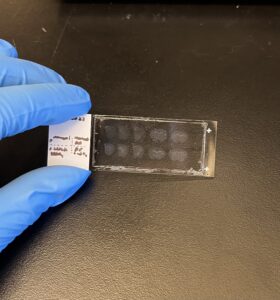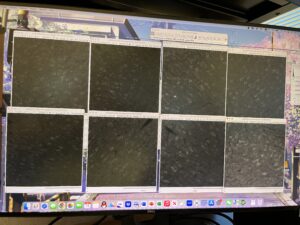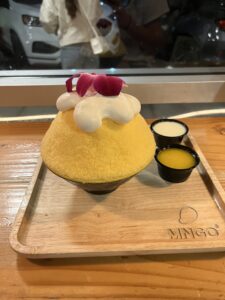Hello everyone! My name is Melaina Yender and this is my fifth week of studying neuroscience and click chemistry at the Ye Lab at the Scripps Research Institute in San Diego, California. As a recap, I have been conducting research with my mentors on the binding of hallucinogenic drugs in the brain through the process of clearing-assisted tissue click chemistry (CATCH). We have conducted multiple experiments revolving around click chemistry in brain tissue and with different alkyne-modified drug probes.
The beginning of the week was primarily dedicated to the in vitro electrochem experiment. We decided to put a hold on the in vivo part of the experiment because after some research we discovered the half-life for the drugs was way shorter than what we originally thought. This means that the probes had already worn off and detached from the receptors by the time we harvested the brains. The results from the in vivo samples have repeatedly come back differently than the in vitro, which has had favorable results. My mentors decided to collect the membrane and soluble fractions from the in vitro samples and store them at -80°C. Then at any point, we had the ability to thaw the proteome, introduce the probe, and electrically activate the samples to then run through the gel on the same day. This allowed for the process to be more efficient and concise. I was given the opportunity to complete the majority of the experiment independently and with some guidance from my mentors.
Towards the end of the week, I got a chance to run my own CATCH experiment again and was granted the opportunity to test the new probe modification for the first time in vivo. I began by injecting four mice with the new probe of DMT, Pargyline, PF7845-yne, and the Vehicle. I then perfused the mice and harvested the brains to then store in PFA. The following day I embedded the brains into agarose gel and later sliced the tissues into 100-micron sections using the vibratome. I then created the A1P4 solution to store the tissues in and prepare for the degassing and polymerization steps next week.
During the middle of the week, my mentors randomly had me experiment with the overnight incubation buffer for the click reaction. They postulated that the traditional buffer did not consist of enough CuSO4 to effectively label all the probe molecules, causing the signals to be weak and poor imaging quality (which results in inaccurate interpretations of signals). However, the concentration of just the CuSO4 can not increase because it will create a precipitate with the phosphate buffer saline over 1mM. To counteract this, my mentors wanted to try adding CuSO4 into the water and create a high concentration that way to incubate the tissues in. This allows for the maximum amount of copper to occupy the proteins and bind to the probe molecules. They had me select two tissues from my PF samples from a couple of weeks ago to incubate in 1 mM CuSO4 and then two more to incubate in the regular click buffer. The following day I completed the click reaction for the tissues and then imaged them. There was a clear difference between the samples, such as the signals from the samples in the CuSO4 incubation cells were

My slide with the hemisphere and PF samples for the second click reaction and CuSO4 incubation experiment
much brighter and more abundant than the regular incubation buffer. My mentors are now planning to adopt this incubation technique for all future click reactions. For the past year, my mentor Ben has been running experiments on whole brain hemispheres to see how the clearing and click process works with larger tissues. He ran into problems while imaging with the CuSO4 not being able to penetrate through the tissue enough. He had me run a click reaction with some hemisphere slices to see if running the tissues through another round of incubation would help the click labeling and imaging quality. It ended up working, and my mentor is wanting to test the high concentration of CuSO4 incubation to see if it will aid in the labeling of the proteins.
I also helped my mentors with a modified version of the Ketamine pretreatment experiment at the beginning of the week. There were some difficulties with the injections and perfusing, however, everything ended up working in the end and the experiment is ready to be continued this upcoming week. This entire week was very busy and definitely a learning experience for all the experiments we performed. Next week is going to be very busy with new modifications of experiments and my mentors are planning a lot of my final week in the lab.
Outside of the lab, I went to different restaurants and cafes with the other interns. I went to MNGO Cafe and tried Kakigōri, which is Japanese shaved ice and it was absolutely incredible. I also went to Tajima Ramen and had their specialty ramen which was also amazing. We went to La Jolla Shores at 5:30 am for a morning swim this weekend which was very enjoyable. This week was amazing and I am eagerly looking forward to my final week here in San Diego!



Melaina, you seem to be having and incredible time! That shave ice looks delicious and your slides are very interesting!